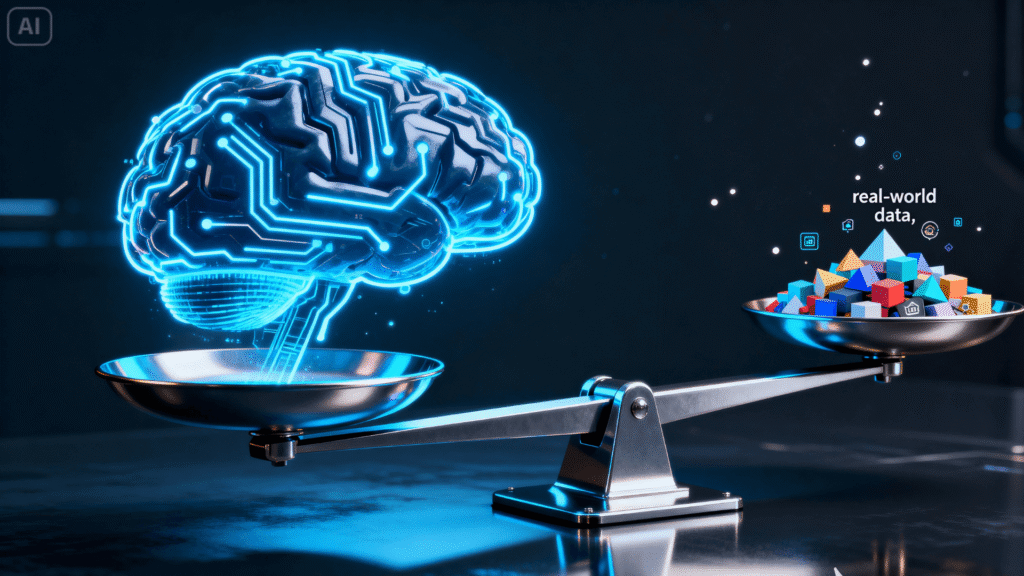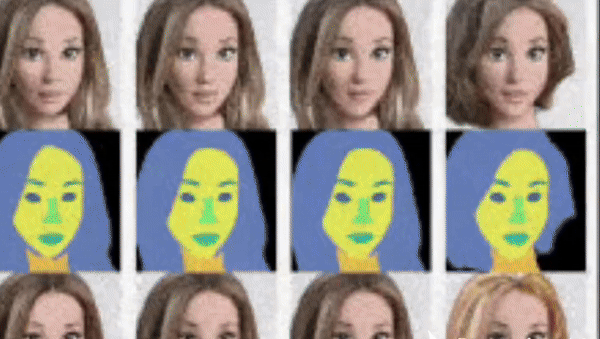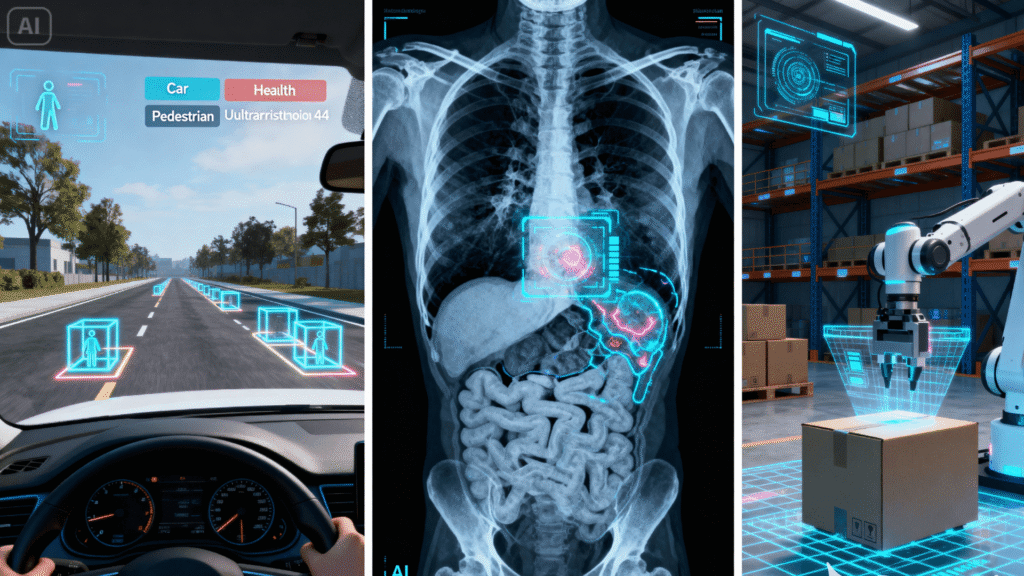Synthetic Data Explained: The Ultimate Guide to AI-Generated Data
Honestly, teaching an AI is pretty much like tossing a newbie pilot into the sky—except, you wouldn’t actually do that, right? You stick ‘em in one of those wild flight simulators first. Let ‘em crash, burn, and freak out over fake thunderstorms. That’s how they get good. This guide on synthetic data explained shows how AI gets its own version of that flight sim.
Synthetic data might sound like sci-fi nonsense, but it’s already changing how AI learns—safely and ethically. Instead of scraping together expensive and privacy-nightmare real-world data, tech folks now just whip up their own. This trick is what’s unblocking a ton of progress in AI right now. I’m gonna break down what this stuff actually is, how it’s made, and where it’s already running the show—think robot cars, medical scans, all that jazz.
Estimated reading time: 9 min.
The Data Dilemma: Why We Need Synthetic Data Explained
Modern AI—especially those deep learning monsters—basically eat data for breakfast. For ages, the whole tech vibe was “more data = better AI.” But, surprise! Turns out real-life data isn’t all it’s cracked up to be. Three big headaches come with it.
- Not Enough, Costs a Fortune: Good, clean, labeled data? Yeah, that stuff’s gold. Training a self-driving car requires a whole army of cars driving bazillions of miles, plus squads of people staring at video, labeling every tiny thing.
- Privacy Nightmares and Built-In Bias: Real data is messy. Medical records have sensitive info. Finance data has ugly historical biases. If you just feed all that into an AI, guess what? The AI learns all the same bad habits.
- Edge Cases (Limit Scenarios): Here’s where stuff gets seriously wild. Real life just doesn’t throw enough freaky curveballs for any machine to be truly prepared. What happens when a deer shows up on an icy road at dusk? Your AI will probably freak out.

Now that you understand the problem, let’s explore how synthetic data actually solves it.
The Solution: What is Synthetic Data?
Okay, so what is synthetic data? It’s not just a bunch of nonsense we make up. It’s data produced by an AI that behaves and appears real, but without simply plagiarizing. The best analogy is a spontaneous self-portrait vs. a super-produced cover photo. The self-portrait is real data—funky angle, bad lighting. Synthetic data is the cover photo—impeccable, yet still looks authentic.
And please, let’s not call it “fake”—that’s missing the point. It’s more like custom-fit data. The real flex? You can crank out as much as you want, dial up the weirdness, and cover all those “once every hundred years” moments, like a squirrel kamikazing across the road. That’s how you get algorithms ready for the madness of real life.

The Data Factory: How is Synthetic Data Generated?
Okay, let’s get into the details. In this part of our guide on synthetic data explained, we’ll cover the main ways companies are creating this AI-generated data.
1. 3D Rendering (For Computer Vision)
Honestly, this is the OG move. Companies build super-detailed virtual cities with Unreal Engine, like a video game on steroids, and let virtual cars drive around forever. They can crank up the rain, cause traffic jams, or drop a random dog in the crosswalk. The real kicker? Every pixel is auto-labeled. It saves a ton of cash and headaches. (Source: NVIDIA Drive Sim)
2. Generative Adversarial Networks (GANs)
The idea’s wild: you’ve got two neural networks, basically frenemies. One (the Generator) tries to make fake stuff. The other (the Discriminator) tries to sniff out the fakes. It’s like an endless art forgery contest. After a zillion rounds, the fake images get so good you’d have a hard time telling them apart from the real deal.

3. Language Models (For Text)
Big ones like GPT-4 are basically factories for synthetic text. You feed them a prompt, and boom—out comes endless text, reviews, fake chat logs, whatever you need. Companies use this to build up training data for smaller models without mining real conversations. It’s more or less cheating, but in a good way. (See also: Generative AI Explained)
Now that you know how synthetic data is made, let’s look at where it’s being used.
Synthetic Data in Action: Real-World Applications
Autonomous cars? Oh man, that’s the poster child for synthetic data. Companies like Wayve or NVIDIA feed their AI models billions of fake miles so they can practice handling all the wild stuff you’d never want to see on a real road. Think: a toddler darting out from behind a van. Nobody’s gonna stage that for real, right? So, they just simulate it.
🎥 Watch: What is Synthetic Data and its Benefits?
In this short explainer by Eye on Tech (TechTarget), discover how synthetic data is revolutionizing the way AI models are trained — solving challenges like data scarcity, privacy risks, and bias mitigation. This authoritative 3-minute video breaks down the concept with clarity and real-world examples, perfect for readers who want a quick, visual understanding before diving deeper into our guide.
Fonte: Eye on Tech (TechTarget)
Duração: 3 minutos e 38 segundos
Tópicos abordados: Definição de dados sintéticos, métodos de geração (GANs, renderização 3D), aplicações práticas e benefícios para IA.
Healthcare is a whole different animal. Privacy’s a monster issue. So what do the brainiacs do? Dream up synthetic X-rays and fake MRIs to train diagnostic AIs without spilling anybody’s secrets. It’s slick. (Source: Datagen). The retail world isn’t missing out either, whipping up digital customers to test store layouts. And in robotics, they train robots in these freakishly realistic simulations, then just load the “brain” into the actual robot. It’s like The Matrix, but for coffee machines. Honestly, synthetic data is everywhere. It’s like AI’s cheat code.

The Pros and Cons: Is Synthetic Data a Perfect Solution?
The upsides are huge: it’s a revolution in saving time and money, privacy is no longer an issue, and you have total control to eliminate biases or create rare unicorn cases. But there are downers. The infamous **“Sim-to-Real” gap** is like the universe trolling you. Your AI’s slaying some digital Mario Kart, but then, boom, you toss it into the real world and suddenly it’s tripping over a shadow. Real life is wild, man. Way wilder and messier than any pixel-perfect simulation. People are losing sleep trying to figure this out. (Source: MIT CSAIL)

Now that we’ve seen the good and the bad, let’s wrap up.
Conclusion: The Inevitable Rise of Artificial Data
Big Data? That’s old news. Now we’re rolling into the age of Big Synthetic Data, and honestly, it’s kind of wild. Need a massive amount of data that’s impeccably clean and won’t lead to legal issues? Boom—just make it. This is the cheat code for the next level of AI, whether you’re talking self-driving cars that actually know what they’re doing or cooking up new meds in record time. Synthetic data isn’t replacing reality — it’s expanding it.
Key Takeaways:
- Synthetic data is artificially generated data used to train AIs, solving real-world data limitations.
- It’s cheaper, faster, and preserves privacy, but faces the “sim-to-real” challenge.
- Techniques like 3D rendering and GANs are used to create it.
- It is the key technology enabling the future of autonomous vehicles, robotics, and medicine.
Written by Gisely Noronha — AI and technology writer passionate about simplifying complex topics.
Sources: NVIDIA, MIT CSAIL, Datagen, Google AI Research.
Can an AI be trained 100% with synthetic data?
Yes, and it happens more frequently, especially in applications like autonomous vehicles. Often, the most sensible choice is a blended design, where the AI is first trained on a large synthetic dataset, and then subsequently fine-tuned with a more focused real-world dataset.
What differentiates synthetic data from data augmentation?
Data augmentation works by starting with a real dataset and making small modifications to it (e.g., rotating an image). It expands a real dataset. Synthetic data, meanwhile, creates new data completely from thin air without needing a reference to actual data.
Is bias in synthetic data still possible?
Yes. If the model used to generate the synthetic data is biased, so will be the result. For example, if a city simulation produced only photos of one kind of car, the AI wouldn’t have learned to recognize any other make and model.
Which companies are leaders in synthetic data?
In autonomous vehicles, NVIDIA's Drive Sim platform is a major leader. Outside of this space, there are specialized startups like Datagen, Synthesis AI, and Mostly AI building platforms to generate synthetic data across various sectors.
Will this eliminate the need to collect real-world data?
Probably not completely. Real-world data will always be the definitive benchmark for testing AI performance. The most likely path is a hybrid approach, where 99% of the training is done on synthetic data, and a final 1% of testing is done on a small, high-quality real-world dataset.
Found This Guide Useful?
Share this article if you found it useful! Stay tuned for our upcoming guides on the tech shaping our future.







